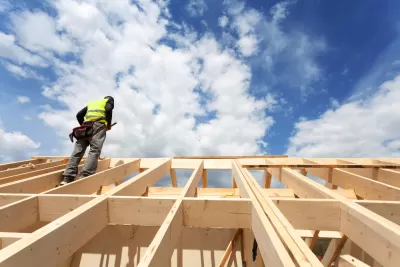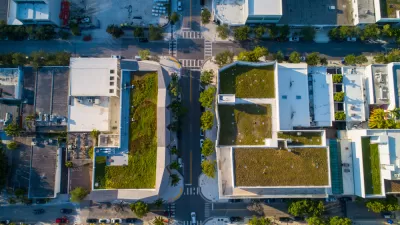New green buildings may be de riguer, but preservation does less harm.

In the last 50 years, humans have used more raw materials and created more waste than in all previous history,” report Jean Carroon FAIA and Ben Carlson.
By now, recycling and reuse are firmly rooted concepts in the American consumer conscience. But when it comes to building, the merits of maintaining and preserving existing buildings are often trumped by the short-term cost efficiencies of replacement and the rewards of green certification.
The built environment is the single largest consumer of materials, which account for 42 percent of all greenhouse gasses emitted in the United States. "Every product, no matter how green, has environmental impacts that include carbon emissions, water and energy consumption, pollution, toxicity, and waste," write Carroon and Carlson. Toxicity from building materials, such as the flame retardants used on everything from carpets to cables, impacts all Americans. "These chemicals are linked to dna mutation, thyroid disruption, memory and learning problems, delayed mental and physical development, lower IQ, advanced puberty, and reduced fertility."
Another critical concern often overlooked is the immediate impact of greenhouse gases emitted from building material extraction, production, construction, and disposal in favor of the touted energy efficiencies of new green buildings. But these energy savings are long-term projections, according to Careen and Carlson, pointing to a 2012 report for the National Trust for Historic Preservation. "It can take between 10 and 80 years for even an energy-efficient new building to overcome, through cleaner operations, the climate change impacts created by its construction." Carroon and Carlson argue that even if we do eventually achieve the goal of manufacturing totally clean and green buildings, there is inherent value in preservation. "Doesn’t a sustainable world need to value what already exists not only for environmental reasons but also to foster creativity, social engagement, and a unique sense of place?"
FULL STORY: Old is the new green

Planetizen Federal Action Tracker
A weekly monitor of how Trump’s orders and actions are impacting planners and planning in America.

Congressman Proposes Bill to Rename DC Metro “Trump Train”
The Make Autorail Great Again Act would withhold federal funding to the system until the Washington Metropolitan Area Transit Authority (WMATA), rebrands as the Washington Metropolitan Authority for Greater Access (WMAGA).

The Simple Legislative Tool Transforming Vacant Downtowns
In California, Michigan and Georgia, an easy win is bringing dollars — and delight — back to city centers.

The States Losing Rural Delivery Rooms at an Alarming Pace
In some states, as few as 9% of rural hospitals still deliver babies. As a result, rising pre-term births, no adequate pre-term care and "harrowing" close calls are a growing reality.

The Small South Asian Republic Going all in on EVs
Thanks to one simple policy change less than five years ago, 65% of new cars in this Himalayan country are now electric.

DC Backpedals on Bike Lane Protection, Swaps Barriers for Paint
Citing aesthetic concerns, the city is removing the concrete barriers and flexposts that once separated Arizona Avenue cyclists from motor vehicles.
Urban Design for Planners 1: Software Tools
This six-course series explores essential urban design concepts using open source software and equips planners with the tools they need to participate fully in the urban design process.
Planning for Universal Design
Learn the tools for implementing Universal Design in planning regulations.
Smith Gee Studio
City of Charlotte
City of Camden Redevelopment Agency
City of Astoria
Transportation Research & Education Center (TREC) at Portland State University
US High Speed Rail Association
City of Camden Redevelopment Agency
Municipality of Princeton (NJ)




























